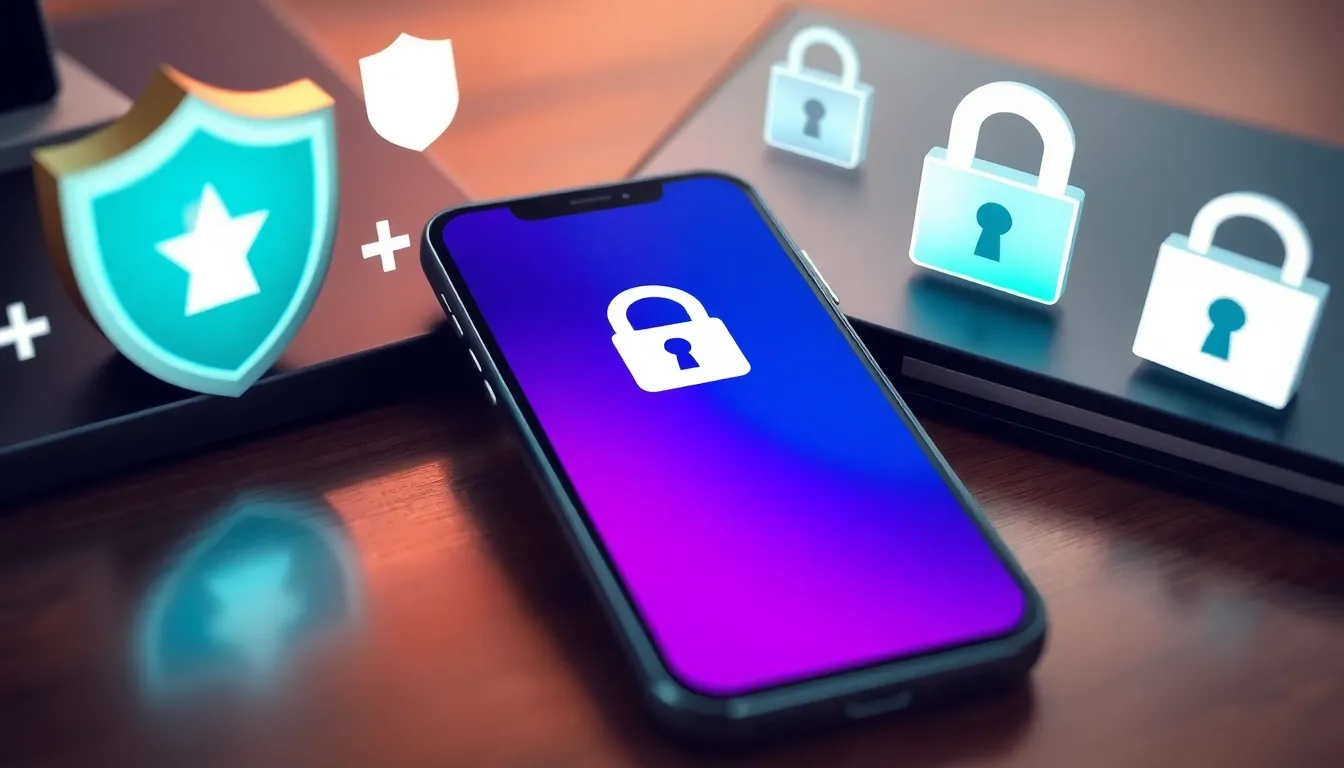In a world where everyone’s glued to their phones, mobile app security is the unsung hero of our digital lives. Imagine your favorite app turning into a sneaky villain, stealing your data while you’re just trying to check the weather. Yikes! With cyber threats lurking like a bad date, it’s time to take mobile app security seriously.
Table of Contents
ToggleUnderstanding Mobile App Security
Mobile app security involves protecting applications from threats and vulnerabilities. Assessing and implementing the right security measures prevents unauthorized access and data breaches.
Definition of Mobile App Security
Mobile app security refers to the processes and measures designed to safeguard mobile applications from cyber threats. This includes protecting sensitive data, user privacy, and ensuring the application’s integrity. Regular updates and security patches contribute to maintaining a secure application environment. Adopting practices like encryption and secure coding can also enhance security. Developers prioritize these actions to prevent malicious attacks that exploit weaknesses in the app.
Importance of Mobile App Security
Mobile app security plays a crucial role in safeguarding user information. According to data, 43% of mobile apps contain security vulnerabilities. Protecting personal and financial information builds user trust and encourages app adoption. Ensuring security compliance with industry standards helps prevent costly breaches and legal repercussions. As mobile app usage increases, securing these applications becomes paramount. Users benefit from enhanced privacy and safety features, leading to a more secure digital experience.
Common Threats to Mobile App Security

Mobile application security faces several significant threats that can jeopardize user data and privacy. Recognizing these threats enables developers and users to take proactive measures.
Malware and Viruses
Malware represents a serious threat to mobile applications. It can infiltrate devices through unsafe downloads and compromised app stores. Once installed, malware can steal sensitive information, track user activity, and even control device functions. According to the 2023 data, over 60% of malicious apps were found in unofficial app stores. Antivirus applications help provide defense but don’t guarantee complete protection. Regular updates and vigilant monitoring by users decrease the chances of malware infections. Users must only download applications from trusted sources, as this practice significantly reduces exposure to harmful software.
Data Breaches
Data breaches pose a critical risk for mobile apps. Cybercriminals exploit vulnerabilities to access confidential user data. Statistics reveal that 43% of mobile apps contain security vulnerabilities. These breaches can lead to identity theft, financial loss, and reputational damage for businesses. Companies need to implement strong encryption methods and secure data storage solutions to protect sensitive information. Adopting secure coding practices contributes to minimizing the risk of data leakage. User awareness of privacy settings also plays a vital role in safeguarding personal data against breaches.
Best Practices for Ensuring Mobile App Security
Implementing best practices significantly enhances mobile app security. Developers can follow specific measures to protect applications and user data effectively.
Secure Coding Practices
Employ secure coding practices to reduce vulnerabilities. This includes applying input validation methods to prevent injection attacks. Utilizing frameworks with built-in security features also strengthens app defense. Always keep third-party libraries updated to mitigate risks associated with outdated components. Testing code for security flaws during the development phase can uncover potential threats early. By adopting these approaches, developers can build robust applications that resist attacks from cybercriminals.
Regular Security Audits
Conduct regular security audits to maintain app integrity. Audits help identify vulnerabilities that may arise over time. Engaging independent security experts ensures an objective evaluation of the app’s security posture. Schedule these assessments after major updates or changes to the app. Document findings meticulously and prioritize necessary patches based on severity. By incorporating this practice, developers enhance their overall security strategy and protect user data more effectively.
Tools and Technologies for Mobile App Security
Mobile app security relies on various tools and technologies to safeguard applications. Understanding these components enhances the security posture of mobile applications.
Security Testing Tools
Security testing tools are essential in identifying vulnerabilities during the development phase. Tools like OWASP ZAP provide automated scanning for security flaws, making it easier to spot issues early. Additionally, static analysis tools such as Checkmarx or Veracode evaluate code for potential vulnerabilities without executing it. Penetration testing tools like Burp Suite offer manual testing options, simulating real-world attacks to assess app security. Keeping these tools integrated in the development process ensures developers continuously prioritize security.
Encryption Techniques
Encryption techniques play a critical role in mobile app security by protecting sensitive data. Implementing HTTPS ensures secure communication between the app and servers, mitigating interception risks. Data-at-rest encryption through AES (Advanced Encryption Standard) protects stored information from unauthorized access. Users’ personal information benefits greatly from end-to-end encryption, secured throughout the entire data exchange process. Opting for strong encryption algorithms minimizes the risk of data breaches, fostering user trust in mobile applications.
Mobile app security is more crucial than ever in today’s digital landscape. With the rise of cyber threats and the potential for data breaches, developers must prioritize robust security measures to protect user information. By implementing best practices like secure coding and regular audits, they can significantly reduce vulnerabilities.
Users also play a vital role in maintaining their own security by downloading apps from trusted sources and being aware of privacy settings. As mobile app usage continues to grow, a collective effort in safeguarding applications will enhance user trust and create a safer digital environment for everyone.



